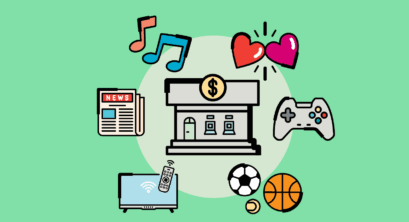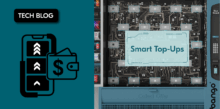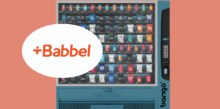Banks and the great Gen Z loyalty reset
by Aurélien Dur | 10 Oct 2025

They’re hitting quit on you. Win them back with Super Bundling from Bango
For your grandparents, banking was a lifelong relationship. You knew the Manager; the Manager knew your family. Over the years he’d handle your savings, your loans, your mortgage … then introduce the same bank to your own kids. But banking isn’t what it used to be.
Boomers stayed with the same bank for over 25 years.
Today, it’s common for younger adults to never visit a bricks-and-mortar bank. With an app for everything, the teller window is history and cashing checks a mystery. The “Bank Manager” – if the title even exists – isn’t a man in a suit, but a techie in jeans. And commoditized services, payments, debits, loans – are hard to differentiate on their own merits.
All of which makes customer loyalty a hard problem. It might sound strange, given how money and credit are at the heart of most people’s lives. But the plain truth is your services are available from hundreds of organizations, many providing comparable services that are hard to tell apart.
So, to rebuild loyalty, forget about a return to the old days – the gilded banking halls that attracted 20th century consumers are seen as obsolete relics by those born in the 21st century. Solving churn involves new ideas, new approaches, and new technology.
The good news is that the methods are available to both Main Street “legacy” banks, and modern neobanks, with no home except the web. How can today’s banks win the loyalty of Millennial and Gen Z consumers, who are often quick to explore new options – and keep them?
Four forces reshaping today’s banking landscape
The latest Bango banking report, “Loyalty pays” suggests four forces combine to make the banking business – and bankers’ stomachs – prone to churn. As you read, bear in mind this quartet isn’t simply a challenge, but an opportunity.
- 750 and counting: the growth of neobanks
An Accenture study claims the “neobank” sector – online-only banks accessed via apps, now consumers the answer’s obvious: they don’t.
Of course, any bricks-and-mortar bank now offers web servicing too, and many have launched sub-brands to appeal to Millennials and Gen Z. It’s great for cost efficiency. Some years back, Accenture found legacy-bound traditional banks spend up to $250 servicing each checking account; at a neo, it’s more like $20. The generations who live their lives on the web want their services fast, simple, and easy to access – and web banking delivers.
- When everything looks the same, loyalty disappears
The strength of neobanking – cost efficiency – also creates challenges. Lower revenue per customer compared to traditional banks, combined with shared business models and technology, makes it harder for neobanks to stand apart. Without clear differentiation, consumers often perceive them as offering similar value
It’s where the cloud both gives and takes. Hyperscale datacenters, off-the-shelf microservices, and standard APIs make building a bank fast and agile, but there’s an equally low barrier to entry, making competition ferocious. Old banks aimed for a 55–65% cost-to-income ratio from their customers; neobanks expect just 30–40% from a far lower cost base. In a commoditized world, costs are low. But so are profits.
- Cohort culture: the expectations of digital natives
The oldest Millennials are in their mid-forties, yet it’s hard to find a Luddite among them. They were the first generation to own mobile phones, take laptops to college, consume the web on a tablet instead of a desktop. And while Millennials moved to the neighbourhood, Gen Z was born there: the first cohort to whom cloud services and streaming media were the normal way of doing things.
Used to free trials, special offers, and value at their fingertips, these consumers are savvy and know how to find the best deal. They weigh options carefully and won’t hesitate to switch if something better comes along, making loyalty harder to earn, and easier to lose. So, it’s easy for their banks to get stuck in a cycle of endless discounting just to hit acquisition targets, with no guarantee of future loyalty.
- One tap, zero loyalty
Convenience of banking means convenience of leaving, too. In some markets, a single tap can shift your entire financial life, the US is catching up with new open banking rules, including every payment recipient and monthly debit. Zero hassle means zero inertia. And it’s equally easy to set up a second account: Accenture found 75% of Americans hold accounts with at least one competitor to their main bank.
All this means loyalty is down to differentiation. But how’s a bank to mark itself out in a world gone web? One word from Bango: Super Bundling.
The reset for banking: you’re selling convenience, not checking accounts
From Steam to Spotify, content that once came on physical media now lives in the cloud, accessed by subscription, not owned. It’s the subscription economy. Many younger consumers think nothing of taking out multiple subs; 70% have forever subscriptions, they’re so invested in they’ll never cancel.
Yet managing them is a huge pain point. The average US consumer juggles 5.4 subscriptions, and a few outliers hold more than 15. Nearly half (49%) suffer “subscription overload.” More than half (57%) have cancelled services after unexpected price jumps.
This is why banks should be using subscription bundling to rebuild customer loyalty.
The opportunity: treat subscription convenience as your service
Compare the average consumer’s mess of subscriptions to how you offer banking. A single app. A single statement. A single fee covering multiple services.
The insight: what you’re selling isn’t financial services. It’s consumer convenience. Bonus: you’re already trusted for it.
Imagine bringing their favorite streaming providers together in one place, with one fee, managed on one page. It’s a recipe for sky-high retention figures and maximized product differentiation. And it’s yours for the taking.
Young consumers name their bank or wallet provider as their preferred home for an all-in-one subscription hub.
It’s called Super Bundling. And the way to do it is through the Digital Vending Machine® (DVM™) from Bango.
Introducing Super Bundling with the Digital Vending Machine®
Subscription bundling means offering multiple paid services – Spotify, Netflix, YouTube Premium, assorted SaaS, under a single monthly payment. It lets you offer huge perceived value, to the consumer audience that uses them the most. A dream pairing.
Ultimate value from an integrated bundle …
What if a well-curated subscription bundle could offer them not £250, but $4,290 of value? The actual offer of neobank Revolut, one of the world’s fastest-growing, and a Bango customer.
… with top subscription services ready to go
Many top subscription services are available through the Digital Vending Machine, so no hassles with onboarding providers one by one. And you’re not limited to a fixed set; you can pick and mix your own custom bundle. Perhaps one that reflects your ideal customer persona. Perhaps a dozen to appeal to different parts of your market. This is the beauty of Super Bundling with the DVM: it’s flexible.
… an easy migration path for new customers
Nor does taking up these services involve a consumer shutting down Netflix et al and resubscribing; that’s a hassle factor that needs to go away. The DVM treats payment method and member status as separate workflows and integrates them, in easy-to-follow customer journeys mediated by a web-based API. They’re still seeing the services they use, in the same way – but their payment is going to you.
… and straightforward integration with your app
Completing the picture is a user interface frontend you can white-label and integrate into your own banking application. Letting you offer hundreds of high-value services under a single monthly payment – and leveraging the convenience Millennials and Zoomers already expect from their bank into a whole new area.
Conclusion: Use differentiation to reset consumer loyalty
At Bango, we believe Super Bundling is the perfect way for banks of all sizes to carve out a defensible market position. Finance plays a central role in everyone’s life, and subscriptions feel the same to younger consumers – your bank can now offer both. And make it so convenient for them that they’ll never leave.
Ready to reset loyalty with Super Bundling?
Discover how the Digital Vending Machine® makes it possible
Subscribe to our newsletter
Get the latest subscription bundling news and insights delivered straight to your inbox.



